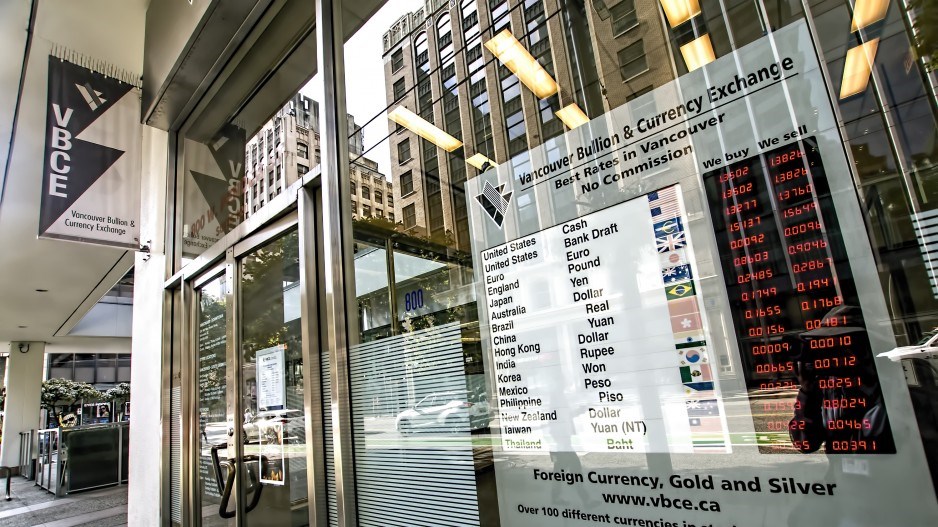British Columbians vacationing south of the border for the first time since pandemic restrictions eased were hit hard converting their loonies to greenbacks this past summer.
After hovering around US$0.79 in early June, the Canadian dollar has fallen steadily over the ensuing months – even flirting with US$0.72 the past few weeks.
“We take a look at the Canadian dollar relative to the U.S. dollar all the time, and it’s been quite bad,” said Brooke Thackray, research analyst at financial services firm Horizons ETFs (Canada) Management Inc. “But it hasn’t been that bad of a ride if you’ve travelled to Europe this summer.”
While the loonie’s slide against the U.S. dollar might be cause for consternation among cross-border travellers, it doesn’t necessarily portend to bad news for those looking for economic upsides in the coming months.
“The [U.S. Federal Reserve] is clearly the biggest force here,” said Karl Schamotta, chief market strategist at Corpay (Fleetcor Technologies Inc.). “The fact that inflation in the U.S. is running higher and at a more persistent level than markets had expected has meant that the Fed is tightening policy to the point that it is breaking things throughout the global economy.”
And with that, investors are turning to safe-haven currencies like the greenback to park their dollars for the time being, helping inflate the value of that currency.
But there are additional factors at play in terms of why the loonie has been sliding against the U.S. dollar and what it means for the Canadian economy.
While the Canadian dollar is often described as “petro-currency” – one whose value is often tied to the price of oil – that hasn’t been the case recently during a period of significant volatility in the oil markets, according to Thackray.
Instead, he echoed Schamotta’s sentiments about the Fed’s influence on the Loonie.
“Although we’ve been raising rates in Canada, the U.S. has been raising them substantially faster,” he said, adding that on a seasonal basis the Canadian dollar typically lags behind the U.S dollar in the months of October and November due to lower energy prices.
“From a trading perspective, we would favour the U.S. dollar over the Canadian dollar at this time and perhaps look to switch that some time in the new year when the Canadian dollar tends to perform well relative to the U.S. dollar.”
Meanwhile, Schamotta said Canada’s export sector might benefit from a weakened dollar at the same time importers lose out.
“What you could be looking at it is an economy that is shaped very differently in a year relative to where it is today.”
Schamotta added that it could take six to 12 months before the decline in exchange rates pushes importers to pass those differences onto consumers.
On the other hand, it might be too economically unviable for those businesses to pass on those costs.
“Quite often when the Canadian dollar is falling, that’s also when the Canadian economy is underperforming or contracting. That is a time when businesses are typically unable to pass on those prices,” Schamotta said.
“What this does is quite often when we see that big drop in the dollar, we don’t necessarily see an equal and corresponding rise in inflation.”
One other problem is that if the global economy slows in the coming months as central banks worldwide hike rates in a bid to tamp down on inflation, demand for Canadian commodity exports won’t be surging, he added.
“You’re looking at a U.S. dollar that is overwhelmingly overvalued when we look at it on a global level,” Schamotta said, “and so at some point, we should be looking at a correction in the U.S. dollar.”
Thackray agreed.
“But if I had to take a look at between the two of them – Canada and the U.S. – on a go-forward basis, I’d say that Canada … is probably going to lag the U.S. dollar over the next few months.”




